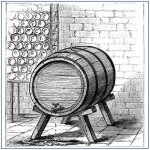Intellectual Property & How to Protect It
When you have a video game company, nearly all of your value in that company is going to be in intellectual property that your developers are creating. It is not necessarily just the value of how many games you can sell, the primary value is in your intellectual property. When an investor is interested in funding your project, it is the intellectual property they are actually investing in.
Video Game Law 101 with Zachary Strebeck
Zachary Strebeck is a California game lawyer who represents clients in the video game, tabletop game, and mobile app industries. In addition to his solo law practice, Zachary serves as Of Counsel to The McArthur Law Firm, where he counsels clients in business formation and fundraising issues, game development contracts, and the protection and enforcement of intellectual property.In this CLE class video Zachary Strebeck discusses Intellectual Property & How to Protect It.
You can watch the complete Video Game Law CLE class here:
Video Game Law CLE
Given that, if you’re not properly registering it and enforcing that protection, you could be doing yourself a huge disservice. So, what is intellectual property? Intellectual property refers to creations of the mind, which encompasses inventions, literary and artistic works; and symbols, names and images used in commerce.
Protection comes in four forms. First are patents, which protects inventions, ideas, and mechanical processes. The three main requirements for something to be patented are; it has to be useful, it has to be non-obvious, and it has to be novel, which has to be something new. You can’t patent something that already exists. You get 20 years of protection on a patent. Because they are ideas, they don’t want to keep these new and useful ideas stuck with one company, or one owner for too long. The interesting thing about patents is that they don’t actually give you any affirmative rights, it merely allows you to stop other people from using your patent.
Copyrights are the second way of protecting intellectual property and protect original works of authorship. Copyrights do give you an affirmative and exclusive right to make duplicate copies of your work, or to publicly preform them. Copyright exists as soon as you create something and you fix it in a tangible medium of expression. Meaning, you’ve put your ideas into writing. You can not sue anyone for use of this copyright unless you register it with proper authorities.
Next are trademarks, which protect symbols that identify the source of consumer goods. A trademark is a source identifier and it is protecting the trademark owner from competition using the same trademark.








